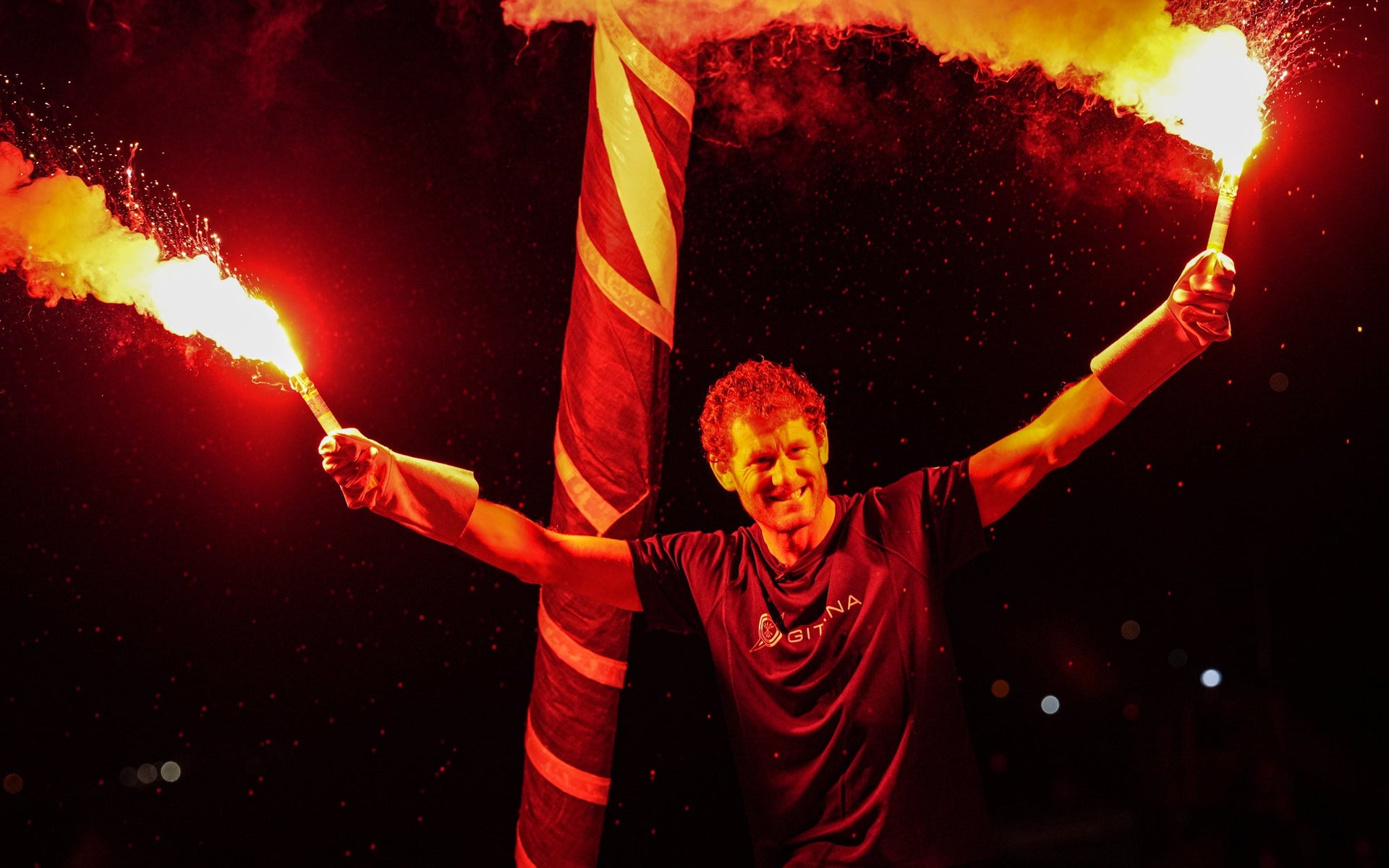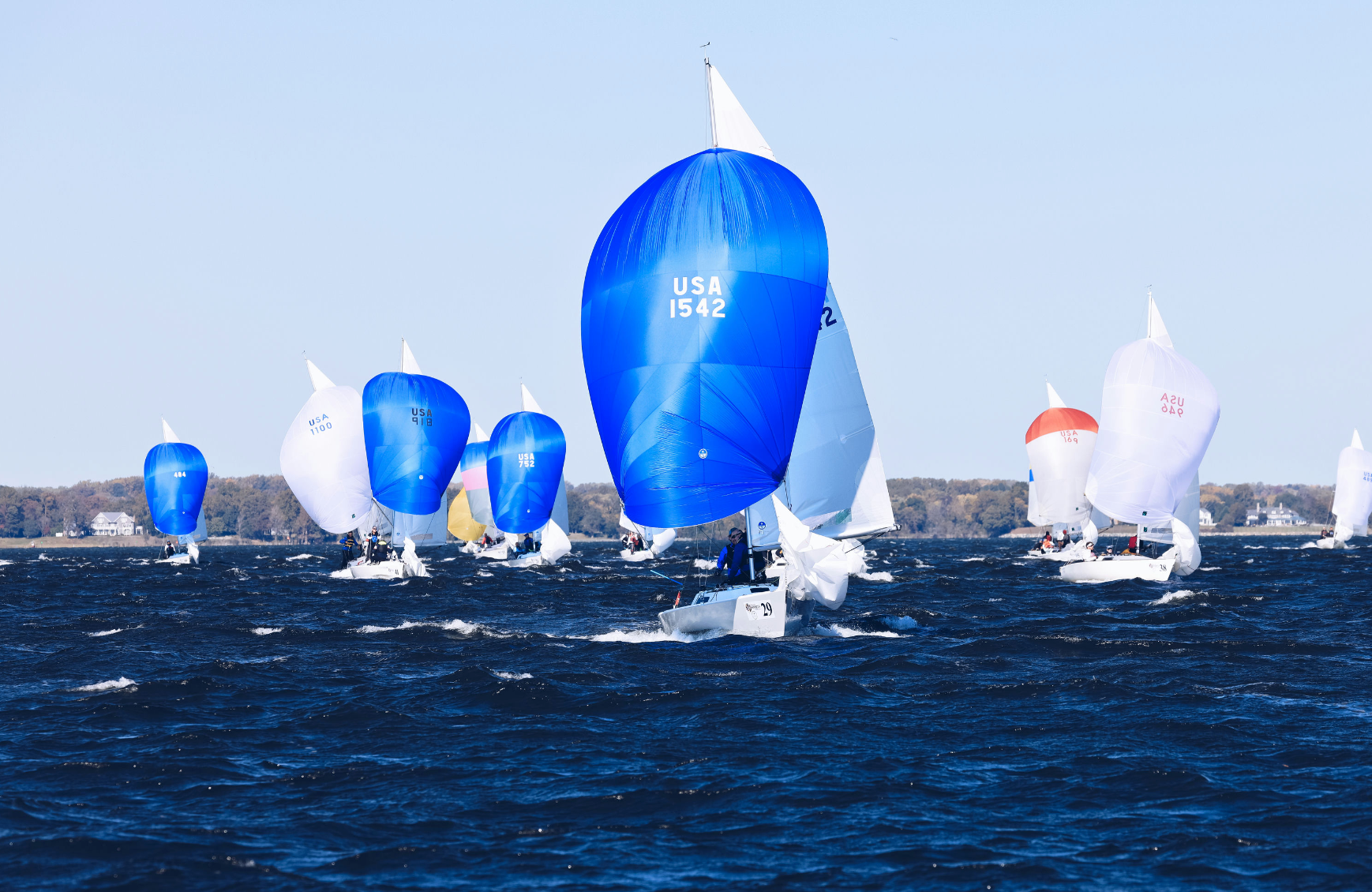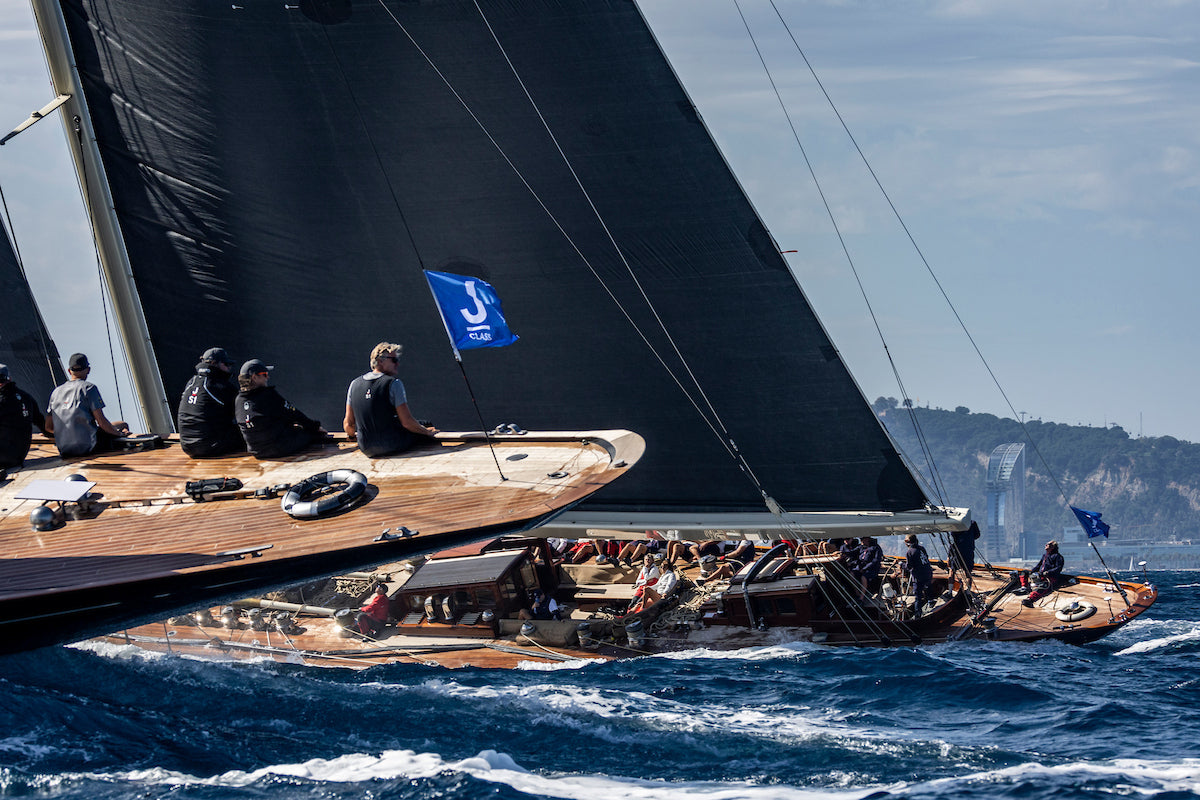CHARLES CAUDRELIER – ROUTE DU RHUM WINNER 2022
CHARLES CAUDRELIER | ROUTE DU RHUM 2022 WINNER
Aboard With the Maxi Edmond De Rothschild Skipper
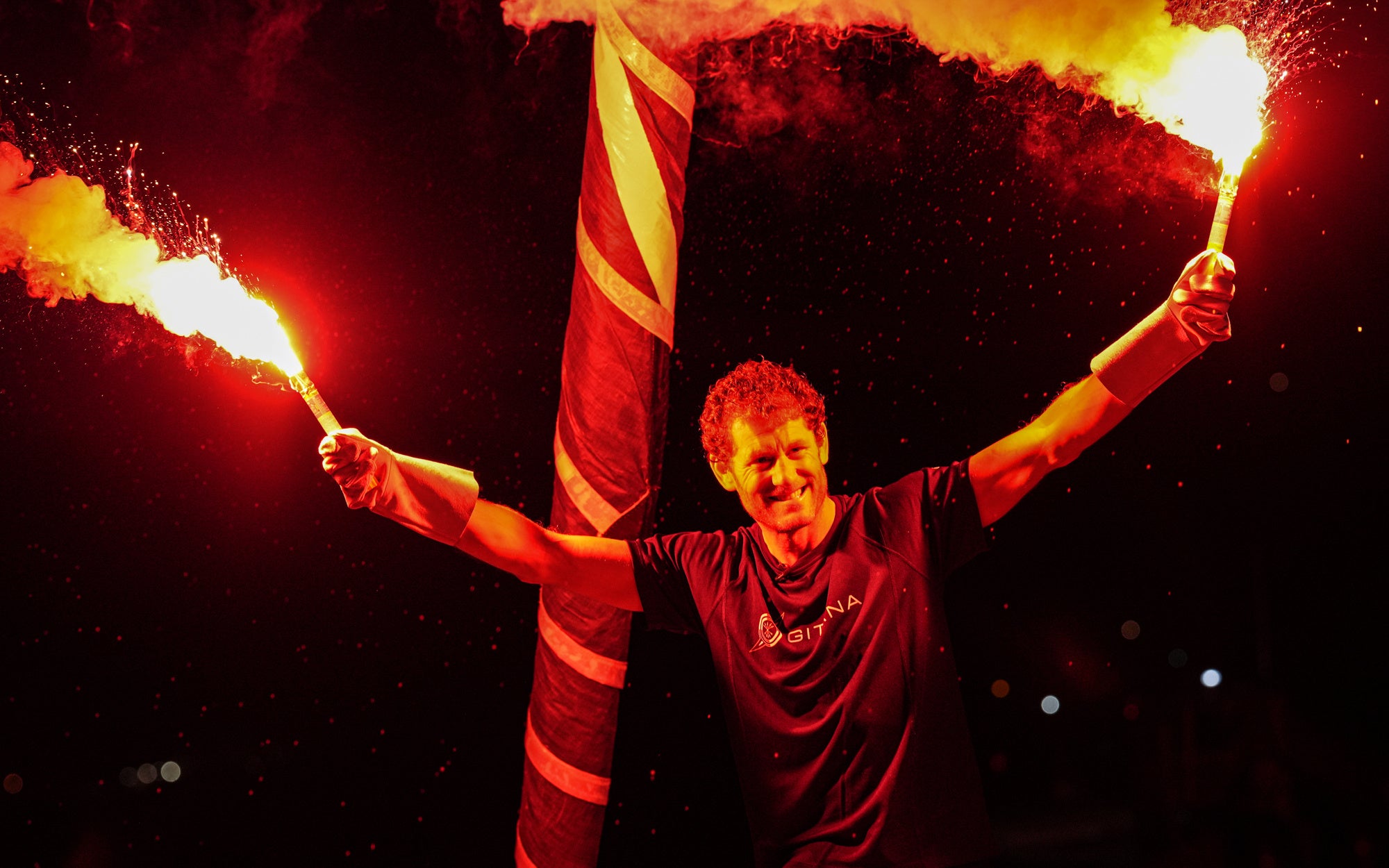
If Charles Caudrelier were a superhero, then he would have to be Clark Kent / Superman. Ashore, he is quintessentially Clark Kent; mild-mannered and self-effacing. Caudrelier doesn’t need a telephone box and a cape to turn into Superman, though; he just needs to step aboard a boat. Racing the Ultime, Gitana Team Maxi Edmond de Rothschild, Caudrelier’s recent performance to win the 2022 Route du Rhum – Destination Guadeloupe was the stuff of superheroes.
The Maxi Edmond de Rothschild is an extraordinary machine; launched in July 2017 at 32m long, she was the first offshore maxi-multihull built to foil across oceans and around the world. And she does this at a fighting weight of 16.5 tons with 650m2 of downwind sail area, that’s more than three tennis courts worth of high-technology fabrics.
Imagine being onboard while she’s going full-throttle at close to fifty knots, in the dark, in the mid-Atlantic. Airborne and alone. This is not a job for mere mortals… but it was just one more extraordinary performance in Caudrelier’s career, one that has already included a win in the solo Solitaire du Figaro, two wins in the two-handed Transat Jacques Vabre, and double victories in the fully-crewed Volvo Ocean Race, the second as skipper.
When it was pointed out that all this puts him on a pedestal with the true greats of ocean racing, Caudrelier replied, “If I see the line of my career, it’s amazing… but… I don’t know what to say, I don’t want to be arrogant… I think I’ve done a good job, and I’m also very lucky in my career to be in good teams and to be surrounded by amazing people and sail with lots of the best sailors in the world. And I’m like a sponge, I think. I like to watch the best and take the best things from the best guys.”
It’s a strategy that has now made Caudrelier ‘the best guy’ – so, what qualities did he bring to the performance? “I think my ability to work with a team and to push everybody in a good direction, and to be surrounded by good people has always been one of my strengths. I also think it’s my determination to be there; I worked hard, and I had to do a lot to be chosen as skipper of a team like this. My motivation was 100%, I’m able to push… that’s what my
Caudrelier’s elapsed time of six days, 19 hours, 47 minutes, and 25 seconds was more than 18 and a half hours quicker than the record set by Francis Joyon in 2018. And the new record was achieved in far from ideal conditions, with the Ultimes facing complex weather patterns and being forced to negotiate a series of transitions and fronts.
“I had the most experience, and I knew exactly how to trim my boat,” Caudrelier explained. “If you give me a true wind angle and a true wind speed, I can tell you where to put all the settings of the boat to be fast. I could see that in every transition, I was faster, and I was able to do different modes.”
Maxi Edmond de Rothschild has been the boat to beat since she was first launched, and it’s particularly impressive that the team has maintained their advantage for so long in this almost unlimited design space. It revealed much about their approach when Caudrelier was asked what it was that made the boat a winner, and he replied with three different areas. “We made a big step this year with the new appendages… I think our foils are just a weapon.
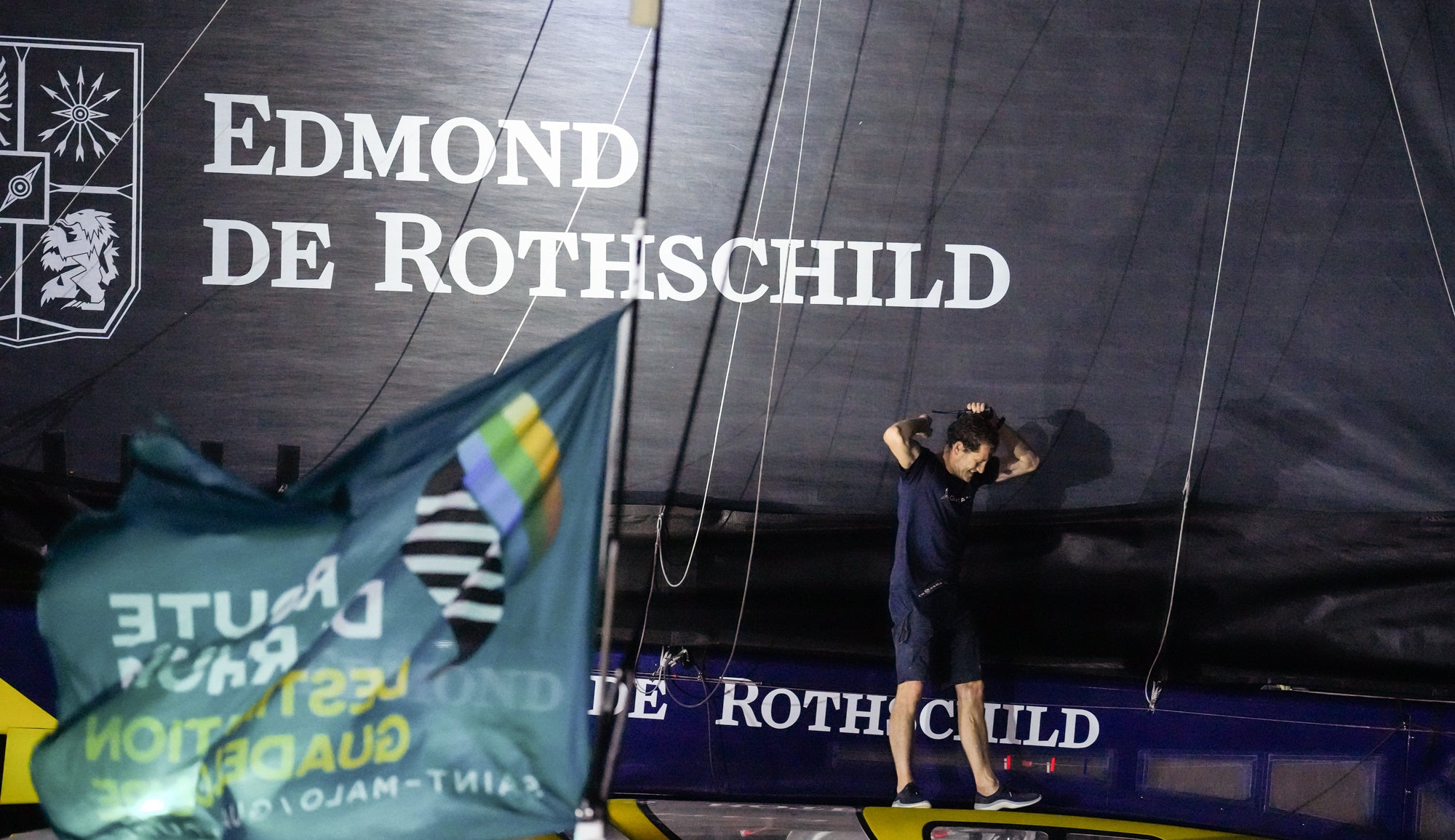
“Today, I’m very focused on the appendages because this is an area where we can improve. I don’t have the experience of Franck
“That’s where it’s very interesting to sail on a team because the feedback of the sailors is really important. And it’s also very important to understand all the appendage work and to watch them while you are sailing; watch where there is cavitation, where there is ventilation, and the behavior of the appendage in the water… I think today, I’ve become useful for my design team.”
Maxi Edmond de Rothschild has a full North 3Di inventory – and Caudrelier was wearing the North Sails Collection Performance gear. “And this year, for example, I think we gained a lot from the new sails… I think we were the first team to play with load sharing
“We have also designed a different J1,” continued Caudrelier, “with a top halyard where everybody
Caudrelier pointed out that it’s not easy to make gains when all of your main competition are also using North Sails. The whole Ultime podium was using North Sails (along with the IMOCA podium, the winner in the Ocean Fifty Class and second and third in Class 40). Caudrelier put much of their success down to the strength of their relationship. “All the good teams work with North Sails, so there are no big differences, but some details… The
These days the aero package isn’t just about the sails either. “We have been working a lot on the aero with lots of details that we have improved.”
“It’s very important… We have a bigger range of true wind angles
The overall approach is not to look for the ‘silver bullets’ though. “We always push and try to improve the really small details. And the fact is that the team never says no… We have amazing people within the Gitana Team! we have been pushing a lot… and improved a lot… maybe 100 details make a difference today in speed.”
The reliability of the fleet was noticeably improved in this race compared to the previous edition four years ago, but it was yet another strength for Maxi Edmond de Rothschild – the toolbox stayed stowed. “I’ve never damaged any sails on the boat,” said Caudrelier. “It’s about working, sailing, and making good choices… but maybe if we don’t ever break anything, then we are too strong. So, we have to find the right balance. I think today we have it, but we’ll see…
“Don’t forget that these boats are designed to do a race around the world, and it





















